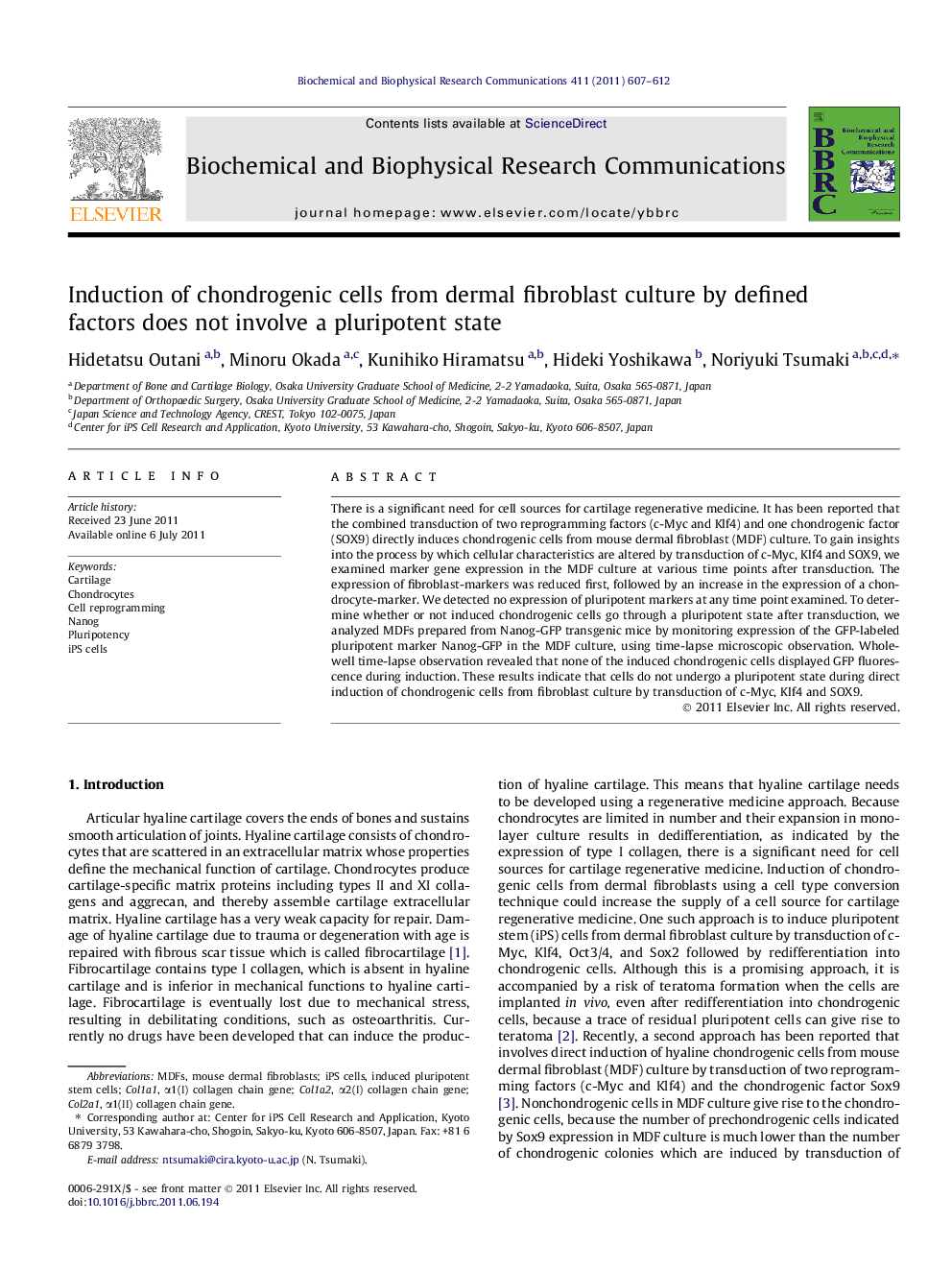| Article ID | Journal | Published Year | Pages | File Type |
|---|---|---|---|---|
| 1930419 | Biochemical and Biophysical Research Communications | 2011 | 6 Pages |
There is a significant need for cell sources for cartilage regenerative medicine. It has been reported that the combined transduction of two reprogramming factors (c-Myc and Klf4) and one chondrogenic factor (SOX9) directly induces chondrogenic cells from mouse dermal fibroblast (MDF) culture. To gain insights into the process by which cellular characteristics are altered by transduction of c-Myc, Klf4 and SOX9, we examined marker gene expression in the MDF culture at various time points after transduction. The expression of fibroblast-markers was reduced first, followed by an increase in the expression of a chondrocyte-marker. We detected no expression of pluripotent markers at any time point examined. To determine whether or not induced chondrogenic cells go through a pluripotent state after transduction, we analyzed MDFs prepared from Nanog-GFP transgenic mice by monitoring expression of the GFP-labeled pluripotent marker Nanog-GFP in the MDF culture, using time-lapse microscopic observation. Whole-well time-lapse observation revealed that none of the induced chondrogenic cells displayed GFP fluorescence during induction. These results indicate that cells do not undergo a pluripotent state during direct induction of chondrogenic cells from fibroblast culture by transduction of c-Myc, Klf4 and SOX9.
► Transduction of c-Myc, Klf4 and SOX9 into MDFs induced chondrogenic cells. ► The transduction initially decreased Col1 mRNA, and then increased Col2 mRNA. ► The transduction induced neither expression of mesendoderm nor pluripotent makers. ► Chondrogenic cells did not express Nanog-GFP during induction. ► Induced chondrogenic cells do not go through a pluripotent state.
